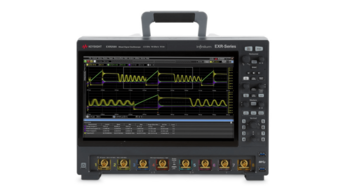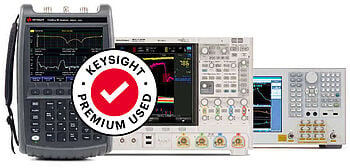- Introduction
- Understanding Magnetic Fields
- Key Characteristics of Magnetic Fields
- Mathematical Representation of Magnetic Fields
- Important Implications:
- Relation to Biot-Savart Law and Ampère’s Law
- Magnetic Field Generation
- 1. Magnetic Fields from Electric Currents
- 2. Magnetic Fields from Intrinsic Magnetic Moments
- Measuring Magnetic Fields with Oscilloscopes
- Methods to Measure Magnetic Fields
- Considerations for Accurate Measurement
- Testing Equipment for Measuring Magnetic Fields
- 1. Hall Effect Sensors
- 2. Magnetometers
- 3. Gaussmeters
- 4. Search Coils and Fluxmeters
- 5. Current Probes for Oscilloscopes
- Choosing the Right Magnetic Field Measurement Tool
- Applications in Electrical Engineering
- Conclusion
- Whenever You’re Ready, Here Are 5 Ways We Can Help You
Have you ever traced the path of an electric current and wondered what unseen forces shape its behavior? Magnetic fields are at work all around you, powering electric motors, enabling wireless charging, and influencing the signals on your testing equipment.
Whether you’re designing circuits, troubleshooting interference, or working with transformers, understanding magnetic fields is essential. Let’s break down what they are, how they work, and why they matter in electrical engineering.
| Key Takeaway |
|---|
| Magnetic fields are fundamental to electrical engineering, shaping the behavior of electric currents, motors, and transformers. Understanding their properties and interactions helps engineers design efficient systems and solve electromagnetic challenges. |
Understanding Magnetic Fields
A magnetic field is a vector field that describes the magnetic influence on moving electric charges, electric currents, and magnetic materials.
It exerts a force perpendicular to the motion of charged particles and the field itself. This principle is crucial in the design and analysis of electrical devices.
Key Characteristics of Magnetic Fields
- Vector nature: Magnetic fields have both magnitude and direction, influencing how they interact with charges and currents.
- Perpendicular force: The force exerted by a magnetic field on a moving charge is always perpendicular to the velocity of the charge and the magnetic field direction.
- Source: Generated by moving electric charges (currents) and intrinsic magnetic moments of elementary particles.
Mathematical Representation of Magnetic Fields
Magnetic fields are vector fields, meaning they have both magnitude and direction. Their behavior is best described using the Lorentz force law, which governs how a charged particle moves in the presence of electric and magnetic fields:
F = q(E + v × B)
This equation states that a charged particle experiences a force due to both electric and magnetic fields.
The electric field E applies a force directly proportional to the charge, while the magnetic field B affects only moving charges, applying a force perpendicular to both their velocity v and the field direction.
Important Implications:
- The force exerted by a magnetic field does not change a particle’s speed, only its direction. This causes charged particles to follow curved paths, which is fundamental to applications like cyclotrons and mass spectrometers.
- Magnetic forces are maximized when velocity and field directions are perpendicular and zero when they are parallel. This explains why charged particles spiral along magnetic field lines in space environments, such as the Earth’s magnetosphere.
Relation to Biot-Savart Law and Ampère’s Law
Beyond the Lorentz force, two key laws describe how currents generate magnetic fields:
- Biot-Savart Law: Describes the magnetic field produced by a small segment of current-carrying wire:
dB = (μ₀ / 4π) * (I dℓ × r̂) / r²
where:- dB is the infinitesimal magnetic field,
- μ₀ is the permeability of free space,
- I is the current,
- dℓ is the infinitesimal length element of the current path,
- r is the distance from the current element.
- Ampère’s Circuital Law: Provides a more generalized way to calculate magnetic fields from symmetrical current distributions:
∫ B · dl = μ₀ Ienc
This equation states that the line integral of the magnetic field B around a closed path is proportional to the total current enclosed within that path.
These laws are essential for calculating magnetic fields in practical engineering applications, such as designing electromagnets, transformers, and inductors.
Magnetic Field Generation
Magnetic fields arise from two primary sources: electric currents and intrinsic magnetic moments of particles.
1. Magnetic Fields from Electric Currents
Moving electric charges generate a magnetic field that encircles the conductor, as described by Ampère’s Law. The direction of this field follows the right-hand rule: if you point your right-hand thumb in the direction of the current, your curled fingers indicate the field’s circular direction.
- Straight current-carrying wire: The field forms concentric circles around the wire.
- Current loop: The field resembles that of a bar magnet, with a north and south pole.
- Solenoid (coil of wire): Produces a nearly uniform magnetic field inside, acting like an electromagnet.
2. Magnetic Fields from Intrinsic Magnetic Moments
Elementary particles such as electrons exhibit a fundamental property called spin, which gives rise to intrinsic magnetism.
This effect is the basis of ferromagnetism, where materials like iron, cobalt, and nickel develop strong magnetic fields due to aligned atomic magnetic moments.
The ability to control and manipulate magnetic fields is critical in engineering applications, such as:
- Electric motors and generators, where rotating magnetic fields induce motion or electrical energy.
- Magnetic storage devices, where tiny magnetic domains store digital information.
- Electromagnetic shielding, where unwanted magnetic fields are blocked or redirected.
By understanding how magnetic fields are generated and how they interact with electric currents and materials, engineers can design efficient electromagnetic systems and mitigate interference in sensitive circuits.
Measuring Magnetic Fields with Oscilloscopes
While oscilloscopes primarily measure voltage, you can measure magnetic fields by converting magnetic effects into voltage signals. This is typically achieved using magnetic field probes or sensors.
Methods to Measure Magnetic Fields
- Magnetic field probes: Specialized probes detect magnetic fields and convert them into voltage signals readable by an oscilloscope. These probes are essential for tasks like electromagnetic interference (EMI) debugging.
- Current probes: Since magnetic fields are generated by currents, measuring the current can provide insights into the associated magnetic field. Current probes can be used with oscilloscopes to measure the current flowing through a conductor, indirectly indicating the magnetic field strength.
- Search coils: A coil of wire can be used to detect changing magnetic fields. When placed in a varying magnetic field, an electromotive force (EMF) is induced in the coil, which can be measured by the oscilloscope. This method is effective for measuring time-varying magnetic fields.
Considerations for Accurate Measurement
- Probe selection: Choose a probe compatible with your oscilloscope and suitable for the frequency range of the magnetic field you're measuring.
- Calibration: Ensure probes are calibrated to maintain measurement accuracy.
- Environmental factors: Be aware of external magnetic sources that could affect measurements.
By effectively utilizing these methods and considerations, you can accurately measure and analyze magnetic fields in various electrical engineering applications.

Testing Equipment for Measuring Magnetic Fields
Accurate measurement of magnetic fields is essential for applications like electromagnetic interference (EMI) testing, motor diagnostics, transformer analysis, and PCB design. Engineers use different instruments depending on the frequency range, field strength, and measurement precision required.
1. Hall Effect Sensors
Hall effect sensors measure static (DC) and dynamic (AC) magnetic fields by detecting the voltage difference created when a magnetic field passes through a semiconductor.
- Best for: Measuring steady or changing magnetic fields in power electronics, electric motors, and industrial automation.
- Advantages: Compact, real-time readings, works well for embedded systems.
- Limitations: Limited sensitivity for very weak magnetic fields.
2. Magnetometers
Magnetometers measure absolute magnetic field strength and come in different types. Fluxgate magnetometers are highly sensitive for low-frequency and DC fields. Vector magnetometers measure the field in three dimensions. Proton precessionmagnetometers are used for geophysical surveys and scientific applications.
- Best for: EMI testing, material characterization, and scientific research.
- Advantages: High precision, detects weak magnetic fields.
- Limitations: Often expensive, sensitive to external interference.
3. Gaussmeters
Gaussmeters measure magnetic field strength in Gauss (G) or Tesla (T) and are commonly used for quality control in magnetic materials.
- Best for: Measuring the strength of permanent magnets, testing transformers and solenoids.
- Advantages: Easy to use, highly accurate.
- Limitations: Designed for static fields rather than fast-changing ones.
4. Search Coils and Fluxmeters
A search coil (loop of wire) placed in a changing magnetic field induces a voltage proportional to the field strength. This induced signal can then be measured by a fluxmeter or an oscilloscope.
- Best for: Measuring time-varying magnetic fields (AC magnetic fields).
- Advantages: High sensitivity to changing fields, useful for transformer testing.
- Limitations: Cannot measure static fields.
5. Current Probes for Oscilloscopes
Since electric currents generate magnetic fields, measuring current can indirectly indicate magnetic field behavior. Oscilloscope current probes use Hall effect sensors or Rogowski coils to measure AC and DC currents.
- Best for: High-frequency applications, power electronics, motor diagnostics.
- Advantages: Works in real-time with existing oscilloscope setups.
- Limitations: Measures current rather than magnetic fields directly.
Choosing the Right Magnetic Field Measurement Tool
Instrument | Best For | Field Type | Pros | Cons |
Hall Effect Sensor | Power electronics, motors, automation | AC & DC | Small, real-time data, cost-effective | Less sensitive for weak fields |
Magnetometer | EMI testing, material characterization | AC & DC | High precision, detects weak fields | Expensive, interference-prone |
Gaussmeter | Permanent magnet testing, transformer QC | DC | High accuracy, easy to use | Not suitable for dynamic fields |
Search Coil + Fluxmeter | AC field measurements, transformer testing | AC | Highly sensitive to changing fields | Cannot measure static fields |
Current Probe + Oscilloscope | Power electronics, motor diagnostics | AC & DC | Works in real-time with circuits | Measures current, not field directly |
Applications in Electrical Engineering
Magnetic fields play a pivotal role in numerous electrical engineering applications:
- Electric motors and generators: The interaction between magnetic fields and conductors induces motion or electricity, fundamental to motor and generator operation.
- Transformers: Magnetic fields facilitate the transfer of energy between circuits through electromagnetic induction.
- Inductors: Components that store energy in a magnetic field when electrical current flows through them.
- Electromagnetic Interference (EMI) Testing: Assessing the impact of unwanted magnetic fields on electronic devices to ensure proper functioning.
Understanding magnetic fields is crucial for designing, analyzing, and troubleshooting these and other electrical systems.
Conclusion
Magnetic fields are fundamental to electrical engineering, influencing everything from motors and transformers to signal integrity in circuits. Understanding their properties, generation, and measurement methods is essential for designing and troubleshooting electronic systems.
For precise magnetic field analysis and circuit diagnostics, high-quality test equipment is essential. If you're looking for premium oscilloscopes, spectrum analyzers, function generators, or multimeters at a lower cost, check out Keysight's Used Equipment Store for certified pre-owned instruments that deliver reliability and accuracy.

Whenever You’re Ready, Here Are 5 Ways We Can Help You
- Browse our Premium Used Oscilloscopes.
- Call tech support US: +1 800 829-4444
Press #, then 2. Hours: 7 am – 5 pm MT, Mon– Fri - Talk to our sales support team by clicking the icon (bottom right corner) on every offer page
- Create an account to get price alerts and access to exclusive waitlists.
- Talk to your account manager about your specific needs.
